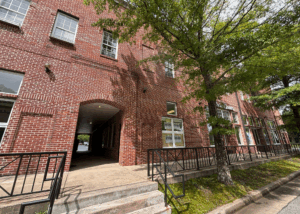“Shroud Encounter” will be coming Sunday, Nov. 13, at 7 p.m. to St Mary Magdalene Catholic Church, 3 Village Road in Newnan.
Admission is free. A life-size replica will be on display.
“Shroud Encounter” is a production of the Shroud of Turin Education Project, Inc. and will be presented by international expert Russ Breault. The presentation is a fast moving, big-screen experience using over 200 images covering all aspects of Shroud research.
Breault has been featured in several national documentaries seen on CBS, History Channel and Discovery. He was interviewed last year for Good Morning America to discuss the latest research. He has presented at numerous colleges and universities including Duke, West Point, Johns Hopkins, Penn State and many others. See ShroudEncounter.com for more info.
The Shroud of Turin is the most analyzed artifact in the world yet remains a mystery. The 14-foot long linen cloth that has been in Turin, Italy for over 400 years and bears the faint front and back image of a 5’10” bearded, crucified man with apparent wounds and bloodstains that match the crucifixion account as recorded in the Bible. Millions of people over the centuries have believed it be the actual burial shroud of Jesus. The historical trail tracks back through Italy, France, Asia Minor (Turkey) and may have originated in the Middle East according to botanical evidence.
A team of 24 scientists in 1981 concluded it was not the work of an artist. They found no visible trace of paint, pigment, dye or other artistic substances on the cloth. The blood is type AB with human DNA as determined in 1995. Skeptics have mounted numerous attempts to show how a medieval artist could have produced the image but all have been inadequate to fully explain how it was formed. If the cloth indeed wrapped a corpse, there are no stains of body decomposition.
The Shroud was largely dismissed in 1988 when three carbon dating labs indicated a medieval origin. However chemical research published in a peer reviewed scientific journal in 2005 showed that the single sample cut from the outside corner edge may not have been part of the original Shroud material. In violation of the sampling protocol, only one sample was used for dating and was cut from the most handled area of the cloth, an area that should have been avoided. The sample may have been part of a section that was repaired sometime during the Middle Ages. Many scientists now believe the carbon dating result is inconclusive.
Adding more doubt to the carbon dating tests, new chemical and mechanical tests published in 2013 by Italian scientists with Padua University indicate a date range of 280 BC to 220 AD.
The mystery continues. National Geographic called it “One of the most perplexing enigmas of modern times.”
“Shroud Encounter” will cover all aspects of the history, science, art and theories of how the image may have been formed.












Leave a Comment
You must be logged in to post a comment.